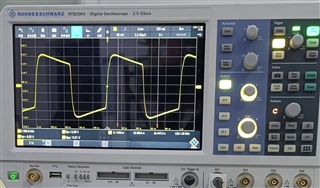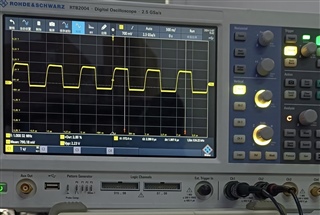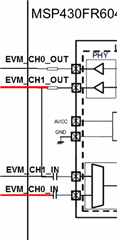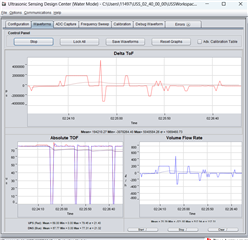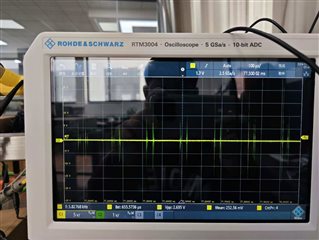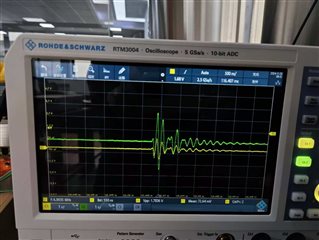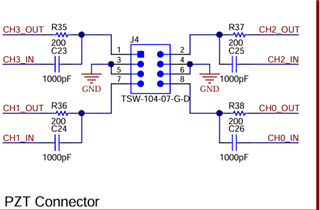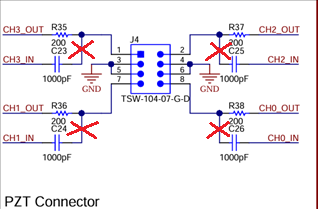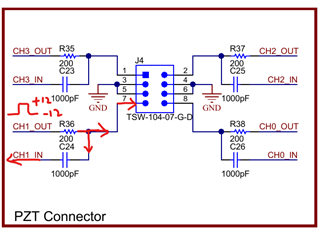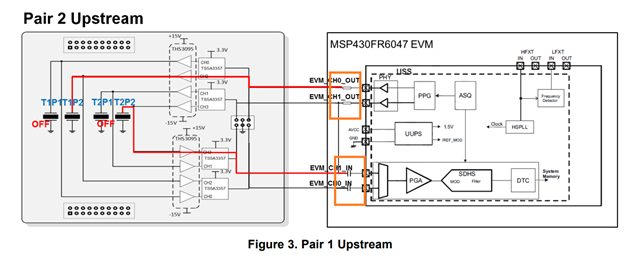Other Parts Discussed in Thread: TIDA-01486, THS3095
Tool/software:
Hi everyone, I need to use the V-clamp mounting method on PVC piping and metal piping, but I found that the reception signal is a bit weak, and I was recommended the TIDA-01486.TIDA-01486 reference design | TI.com

After connecting TIDA-01486, do I need any additional configuration to perform ADC acquisition?I have removed the capacitors and resistors connected to the signal pins on the EVM board as required, and connected them correctly to the signal amplifier circuit.The circuit diagram is as follows:
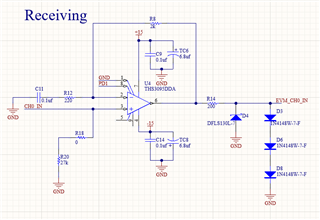
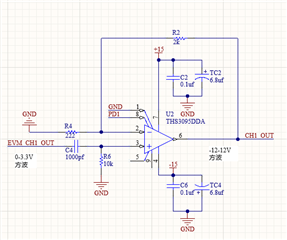
When testing in the lab, I only used one measurement loop, that is, from EVM_CH0_OUT to EVM_CH1_IN.And on the oscilloscope I am sure I see a nice waveform.

The green signal is the amplified drive signal, which is CH0_OUT in the schematic diagram, and the yellow signal is the amplified receiving signal, which is EVM_CH1_IN.
You can see that the amplitude is about 150mv and the time difference is about 80us, I'm not sure if the signal strength can measure the flow properly, but I can't see the waveform at all on the upper computer.

I don't know why this is happening, please help me.The configuration parameters of the EVM are as follows.




